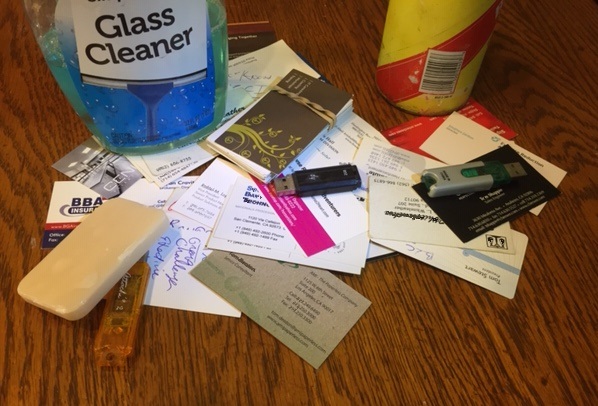 Having a lot of data is nice, having usable data is far better. We will need to look over the data in detail to make sure we are not importing data we don’t need or want. It is surprising in retrospect how often useless data gets imported into a CRM.
Having a lot of data is nice, having usable data is far better. We will need to look over the data in detail to make sure we are not importing data we don’t need or want. It is surprising in retrospect how often useless data gets imported into a CRM.
It is tempting to do a quick clean up, just load the data, and we will clean it up in phase 2 of the project. This really means is Never… the clean-up won’t happen and it will undermine the credibility of your CRM implementation. As soon as users run into bad data, they say the CRM Stinks. Putting dirty data in to a CRM results in a pretty looking Junk. Clean up the data first, you will be glad you did.
Early on it becomes an issue as to “Who is Responsible for keeping the Data Clean”. Sales says its inside sales job, inside says, it’s a customer services job, then everyone gangs up on IT and say it’s their job. The right answer is Everyone who touches it is responsible, Yes Everyone. Many hands make for light work. Yes, the heavy lifting should be done by those with the tech expertise, tools and skills to handle larger data sets. Everyday everyone who uses the data and sees an error needs to help correct it.
The first step is to have Rules and Procedures for your data: What data goes in and what data gets left out. Where does the data go? Make the field names clear and, in the help, text explain it. Use Pick lists to make it easy for folks to do the right thing. Create cheat sheets to que your team on the correct way to enter data. Limit the number of people who can load large amounts of data (using the Data Loader or Data Wizard). Keep the rules simple. Decide on a data standard, what constitutes a valid record for example: a Valid Contact has: First Name, Last Name, full address, phone number, and email address.
Start by running a Salesforce Report for the data you plan to import, for example Accounts. Then export that file and use it as a template for all your incoming data. That way you will have the correct field headings at the top of your import file and the right data will end up in the correct field. Next use Excel to do some basic clean up. First: look for missing data: If there is no phone # or email address, I don’t load that data it is worthless. (Maybe if there is an address it is a keeper, if you have a name & title that is attached to an Account it may have some value). Then I move on to spell check, the state and city fields are easy to spell check. Then look at the phone number and email address. There are outside services for validating phone #, at this level we are looking for a complete phone number and format. A great tool for checking emails is www.neverbounce.com (or pick an email verification service of your own choice) it pings email addresses to see if there is an active valid email in box there. (the person never gets an email so don’t worry about being labeled a spammer.) My take is if the email bounces is dead then the contact is probably not good either. (some folks may disagree with me; you decide what data you keep or get rid of). After we do our cleaning and validation, we load it into Salesforce.
After the CRM is up and running we need to keep the data clean. Some of the methods used by small to mid-sized firms is: Verify just one piece of data on every call: “hey can it confirm your address?” most customer are glad to do this IF you keep it to One piece of data. Have an Address Push one week, e-mail the next, Phone Number and so on. Mix it up one month on one month off et. Do your Top 20 customers per Inside Sales Person. Make it a Game reward the folks that find the most errors, the least errors, funniest mistake etc.

The best tool I ever found for loading data and avoiding duplicates is People Import ( www.validity.com/peopleimport/ ) it matches incoming data with existing data using criteria you select. This software is highly customization so you pick what constitutes a match and what doesn’t. This avoids duplicate leads and contacts based on your own needs and decision.
I don’t suppose creating duplicates when doing an implementation or import is a problem you all ever face? On the off chance it is it may make sense for us to talk.
